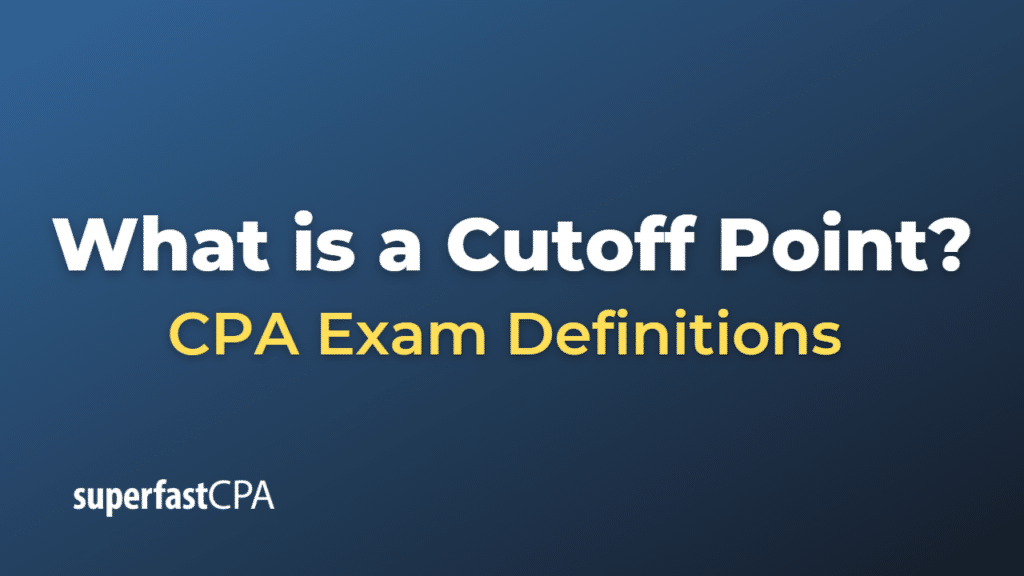Cutoff Point
A cutoff point is a predetermined point, value, or limit at which an action or process is altered or stopped. The term “cutoff point” is used in various contexts with slightly different meanings.
- Investment Analysis: In investment analysis, a cutoff point can refer to a certain rate of return used to decide if an investment should be pursued. If the estimated rate of return exceeds the cutoff point, the investment may be considered worthwhile.
- Statistical Analysis: In statistical analysis, a cutoff point is a designated point of division in a set of data. For example, in hypothesis testing, a significance level (commonly 0.05) is a cutoff point used to reject or fail to reject a null hypothesis.
- Decision Making: In decision making, a cutoff point can be a certain threshold or limit used to trigger a particular action or decision. For example, in a manufacturing process, a cutoff point could be a specific level of product quality or error rate above which the process must be adjusted or stopped.
- Screening or Testing: In medical or psychological testing, a cutoff point is often used to distinguish between positive and negative outcomes. For example, in a blood test, a certain concentration of a substance might be set as the cutoff point above which the test is considered positive.
In all these contexts, the cutoff point serves as a boundary or decision rule that helps to guide actions or decisions based on predetermined criteria.
Example of a Cutoff Point
Let’s consider an example in the context of investment analysis:
Suppose there is an investment firm, XYZ Capital, that has a policy of only investing in projects that are expected to yield a return on investment (ROI) of at least 10%. This 10% ROI is their cutoff point.
Now, they are evaluating two potential investment projects:
- Project A is estimated to yield an ROI of 12%.
- Project B is estimated to yield an ROI of 8%.
Based on their cutoff point, XYZ Capital would decide to invest in Project A because its ROI of 12% exceeds their cutoff point of 10%. However, they would decide not to invest in Project B because its ROI of 8% is below their cutoff point.
This cutoff point helps XYZ Capital to quickly and consistently evaluate potential investments. It helps them to focus on projects that meet their minimum expected return, and to reject projects that do not meet this threshold. This way, they can manage their risk and aim for a certain level of return across their investment portfolio.













